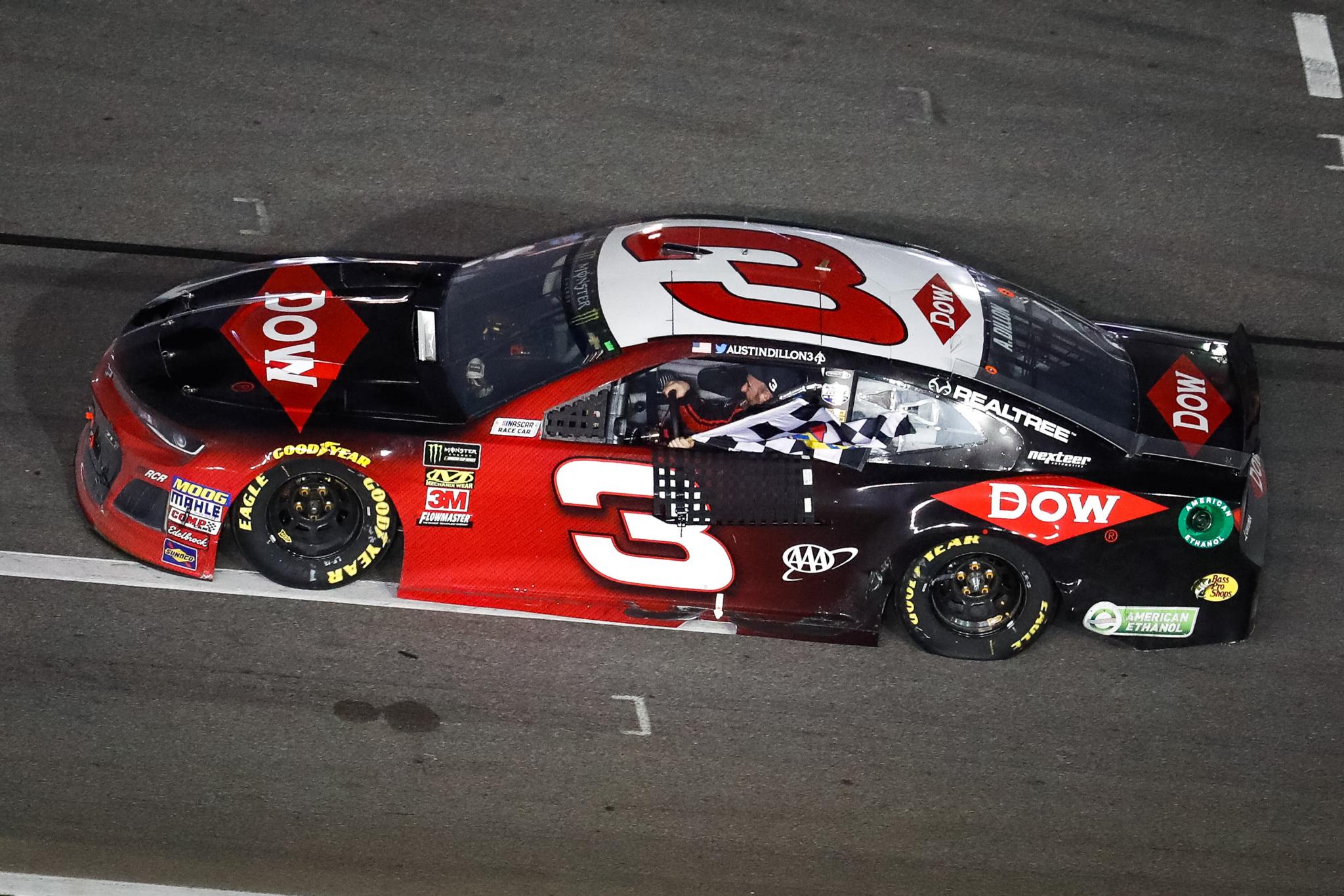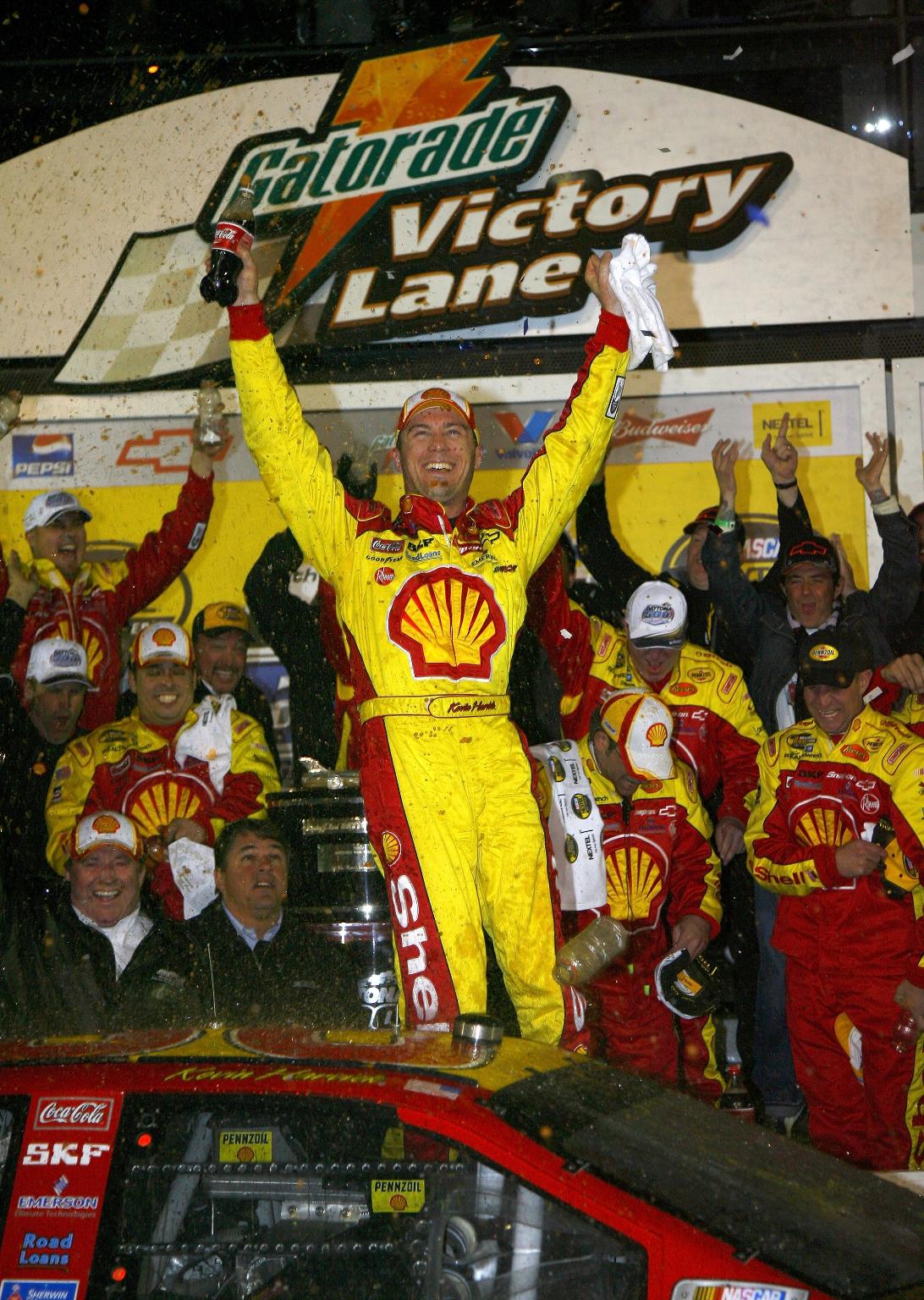Take a Number: And the Number Shall be Three
 |
| Austin Dillon drives off with the checkered flag at Daytona |
| Tom Copland/HHR for Chevy Racing |
This week’s number: 3
Longtime NASCAR fans will, of course, remember the day 20 years ago when Dale Earnhardt finally drove the No. 3 Richard Childress Racing Chevrolet into Victory Lane after the 1998 Daytona 500. It took Earnhardt two decades to win the Great American Race.
It took the No. 3 two more to do it again.
This time, it was Austin Dillon, grandson of team owner Childress, who made a last-lap move to shove his way past Aric Almirola to take the checkered flag. It’s Dillon’s second career victory in NASCAR’s top series, his first coming last year in the Coca-Cola 600 at Charlotte.
[adinserter name="GOOGLE AD"] Sentiment about the car number aside, three comes into play with Dillon’s victory in another way—that’s the number of laps he’s led en route to his two victories, combined.
Leading just one lap at Daytona, Dillon didn’t exactly dominate at Charlotte either, only leading the final two laps. So, what’s the number really say?
While some have hinted that Dillon’s wins are less meaningful – because one came on a Superspeedway, where the racing takes a whole lot of luck, and the other was won on fuel mileage – a win is a win. The winner of a race, regardless of circumstance, employed the best strategy of the day.
Not so say that that strategy is without controversy—Dillon’s winning move on Sunday certainly had its detractors, because it wasn’t the cleanest thing this side of the detergent aisle. Intentional or not, Dillon turned Almirola for the spot, and he didn’t exactly try to avoid the tangle. His Charlotte win is much harder to argue. He wasn’t dominant, but he and his team stretched the fumes in their tank the farthest. Any other team might have done the same.
But that Dillon hasn’t exactly been a force to be reckoned with most weeks is glaringly obvious in the wake of his win Sunday. He’s got four full seasons under his belt now, with a playoff appearance, 10 top 5 finishes and 79 laps led, 76 of them without a win to show for it. Compare that to his predecessor, Kevin Harvick. In his first four full seasons, Harvick won four times, had 27 top 5s and led 1298 laps without the luxury of a handful of starts before his rookie season. Harvick also had two top-10 points finishes in that span.
 |
| Kevin Harvick last took RCR to victory at Daytona in 2007 |
| Rusty Jarrett/Getty Images for NASCAR |
It may be true that Harvick took over the ride while RCR was still one of the most powerful teams in the sport, fresh off the Earnhardt era, while the team as a whole slipped a bit in ensuing years, but Harvick’s numbers in the same ride through 2013 suggest that it’s not just about the cars.
It’s not that Dillon isn’t talented. He’s an XFINITY Series champion, after all. But at this level, everyone is talented, and Dillon doesn’t stand out. He’s not the point leader after Daytona, because despite a late tussle in the 500, Ryan Blaney had a more consistent weekend.
2018 needs to be a year of consistency for Dillon, who will turn 28 in a few weeks. But simple consistency isn’t really enough; he needs to be consistently better before he’s a serious contender. An improvement in average finish by three or so spots and a significant increase in his laps led total are what this team really needs to see in 2018 to be on the radar.
The No. 3 in Victory Lane is a sentimental moment, but for Dillon, three laps led to get there speaks to a driver who’s not quite a top competitor.
[adinserter name="GOOGLE AD"]
